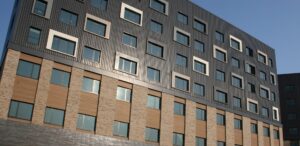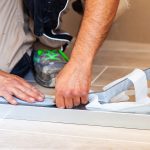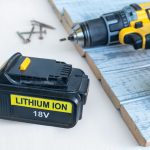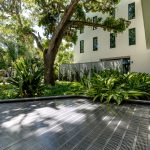
Today’s design and construction trends are pushing the limits, utilizing metal panels, metallic trim, simulated brick, and more in one design for a contemporary aesthetic. To achieve their creative vision, designers seek to integrate various construction materials for a modern, sophisticated look or an updated take on a tried-and-true approach.
The result is a building that uses multiple aesthetic options and creates luminous depth as part of an integrated system for the exterior wall—whether it is a new hotel, an addition to a healthcare facility, a high-rise residential tower, or the new corporate headquarters for a multinational company. The landscape has changed to incorporate varying aesthetics into today’s buildings.
How can architects shape and mold the look of metallic cladding with different textures and finishes that create even more design possibilities? Additionally, how can designers and specifiers have confidence in their durability choices for external metal cladding? How can they tap into the modern look delivered by metal cladding while ensuring it will withstand Mother Nature’s relentless forces?
Embracing metallic coatings provides greater durability and enhanced aesthetics for prefabricated systems, prepared vertical walls, and interior drywall surfaces.
It all begins by taking the systems approach for the building facade.
Delivering durability: The systems approach
Mother Nature’s forces constantly challenge a building’s facade—rain, wind, snow, UV rays, and temperature changes, to name a few. The enclosure’s durability depends on having practical components in place, making it necessary to use control layers to protect from the elements and create a comfortable interior for occupants.
These control layers include:
- A vapor control layer that is permeable or impermeable per the designer specifications to minimize condensation by controlling the flow of water vapor as it shifts from high- to low-pressure areas.
- An air control layer that reduces energy and condensation loss by limiting the uncontrolled air flow through the wall assembly.
- A water penetration control layer that prevents water from entering the wall cavity is flashed to the cladding’s exterior.
- A thermal control layer to mitigate energy loss and prevent thermal bridging.
- A durable, water-shedding layer to protect against environmental elements, impacts, UV exposure, and pollutants.
Fully engineered systems contain all these control layer components in an integrated, tested system. As a single-source solution with a warranty, the layers work in concert to deliver a holistic approach.
When the building enclosure is complete and consistent, the exterior facade can deliver a range of performative aesthetics to bring the architect’s vision to life, including reflectivity and metallic surfaces in various colors and textures.
An expanded palette

Metal panels deliver a flat facade or a one-color gloss. Add a metallic coating with a flake, and the design will have an added shine to catch viewers’ eyes.
With metallic coatings, designers can feature the aesthetic of metal at a fraction of the cost while achieving continuous insulation (c.i.) in a single lightweight system. The resulting facade attains
a reflective property that could only be previously found in natural metals. Facades finished with metallic coatings shift in color as a person’s perspective on the building changes, mimicking how light reflects off a metallic surface.
Metallic coatings are applied as a two-part acrylic-based, high-performance coating system. They can be applied freshly or over existing coatings and on all materials, allowing new opportunities for texture and versatility and giving designers the freedom to follow their inspiration.
Like other coating systems, metallic coatings can be roller-applied or spray-applied without special equipment. They are also part of the existing installation and finishing process without incorporating additional steps.
The metallic coating system is a highly durable surface backed by thousands of hours of testing and real-world weather performance. Durability through elements from a two-part application provides UV stability and long-lasting performance.
When a building featuring traditional metal panels is damaged in a hailstorm, the entire panel must be removed and replaced. However, with some building solutions and metallic coatings, the cladding can be repaired and recoated on-site, avoiding a costly replacement of materials.
A case for metallic coatings: A modern building with cultural identity
A recently completed project in Florida used a metallic coating to merge modern aesthetics with cultural expression and performance-driven design. In 1980, the Seminole Tribe of Florida opened the Seminole Brighton Bay Hotel & Casino just west of Lake Okeechobee on the Brighton Seminole Reservation. Over time, the building began to show its age. Plans were set in motion for a modern hotel and casino featuring updated amenities, meeting space, and a refreshed guest experience.
Plans were drawn up for a 6,689-m2 (72,000-sf) hotel and casino, and the Tribe envisioned the new hotel and casino to be energy efficient and sustainable. Originally, the building called for a metal panel over a cast-in-place concrete substrate designed to mimic wood. However, concerns emerged around integration between manufacturers, cost, and extended construction timelines. The project’s architect, Miguel Goizueta of Grace Hebert Curtis Architects, began searching for an alternative solution to save time and money. He turned to products he had used before and whose quality he trusted. The team proposed a value-engineered alternative: A high-performance EIFS drainage system combining continuous insulation (c.i.) with an integrated air and water-resistive barrier. One coating used adds a realistic, wood-look finish using flexible, resin-cast planks, and at the same time, offers a shimmering, reflective surface ideal for distinctive accents and branding elements, and a great alternative to metal panels. By switching to this option, the team reduced the estimated facade costs by 50 percent and shortened the construction schedule by approximately one month.
While not a code requirement, the Tribe recognized the importance of building to higher standards and chose a system to meet the most stringent hurricane impact criteria. The architect wanted to integrate 3-D diamonds over the c.i. finish as a final touch to the design. Referencing a central motif in the Tribe’s logo, 836 m2 (9,000 sf) of the foam-cut diamonds were finished in Keweenaw Bronze, Bavarian Wheat, and Valencia Orange, with metallic coating added for a reflective, vibrant finish.
Primed for possibilities
The demand for greater versatility in building materials continues to gain traction. Building owners, designers, and contractors seek more choices that bring enduring value—they want options.
Metallic coatings combine durability over the long haul with nearly limitless aesthetic options, combining a range of design and texture within the same color palette. The result: a shifting paradigm for the exterior wall of any building that seeks a metal cladding aesthetic.
James Howell is an associate product manager for Sto Corp., focusing on façade claddings. He has a degree in business management, and more than 20 years of experience working with EIFS, stucco, air, and moisture barriers in R&D and Marketing Departments.





